Mapping mutational signatures across the globe uncovers cooperation between tobacco and alcohol in head and neck cancer
New findings from team Mutographs
Future leader and first author Laura Torrens takes us through the findings of her paper, ‘The complexity of tobacco smoke-induced mutagenesis in head and neck cancer’. The work, led by Sandra Perdomo and published in Nature Genetics, revealed six different mutational signatures due to tobacco smoke exposure and the potential interplay of tobacco with alcohol. Laura, who is a member of both team Mutographs and team PROMINENT, also reflects on her career journey and how her work may inform cancer prevention strategies.
Exploring cancer risk factors worldwide
At least one in two cancers is attributable to modifiable risk factors, highlighting the urgent need to identify and understand the specific exposures that contribute to cancer development. This task is particularly challenging given the variability in environmental exposures and lifestyles around the world, which largely influences the global differences in cancer incidence. Identifying these exposures and elucidating their mechanisms of carcinogenesis are crucial steps toward effective prevention strategies. This was the central hypothesis of Cancer Grand Challenges team Mutographs, tackling the unusual mutations patterns challenge.
The team, which I’m a part of, has been applying its novel ‘mutational epidemiology’ approach on a global scale, to comprehensively catalogue mutational signatures present in the genomes of both cancerous and normal cells, and thereby uncover the underlying mechanisms behind cancer development. With this overall goal in mind, our research examined the mutational effects of cancer risk factors in 265 whole-genome sequenced head and neck cancers (HNC) from eight countries in Europe and South America, thus providing an unprecedented diverse geographical representation of cases. Our findings revealed that tobacco is the main mutagenic agent in HNC, and the various ways tobacco smoke and other HNC-related exposures lead to DNA damage.
Mapping the damaging effects of tobacco
The role of tobacco as one of the most avoidable causes of cancer has been known for many decades. However, the detailed mechanisms by which tobacco smoke leads to DNA damage are still not fully understood. Our study identified six different mutational signatures associated with tobacco in HNC, each potentially caused by different carcinogens present in cigarette smoke.
Furthermore, we observed that the mutational patterns related to tobacco smoke vary across anatomical sites in the head and neck. This finding suggests different susceptibility, exposure level, or clearance of tobacco carcinogens across tissues, ultimately leading to tissue-specific genotoxic effects.
When tobacco and alcohol join forces
We also identified mutational signatures related to alcohol exposure in HNC. Cases exposed to both tobacco and alcohol presented higher burdens of alcohol-related mutations compared to those exposed to alcohol alone. This suggests that tobacco may enhance the mutagenic impact of alcohol, therefore amplifying the carcinogenic potential of these exposures when combined.
Looking ahead
This research deepens our understanding of how tobacco and alcohol drive HNC development, offering valuable insights to inform prevention strategies aimed at reducing the risk of this disease. More broadly, our findings underscore the urgency of reducing exposure to tobacco and alcohol around the world to lower the incidence of this and other cancer types.
Beyond this, our study, along with previous work from the Mutographs team, highlights an intriguing pattern: cancer mutation profiles are remarkably consistent across populations, with differences primarily linked to tobacco. Furthermore, many other cancer-causing exposures, such as human papillomavirus infection or poor oral health, have no or limited mutagenic effect. This discovery evidences the need to find alternative research avenues to fully understand the non-mutagenic causes of cancer. As part of the Cancer Grand Challenges PROMINENT team, tackling the normal phenotypes challenge, we are also exploring whether such exposures can lead to cancer by promoting the clonal expansion of premalignant cells in normal tissues. By investigating these processes, we hope to uncover novel mechanisms through which endogenous and exogenous exposures contribute to cancer development.
Working together to fight cancer
As part of the Mutographs team, this study brings together an international and multidisciplinary team of experts across 11 countries, emphasizing the critical role of international collaborative efforts to advance cancer research. Partnering with scientists and clinicians worldwide, each bringing unique expertise, enhances our collective efforts in tackling cancer’s biggest challenges, while also ensuring the representation of understudied populations.
About Laura
Throughout my career, my primary motivation has been to conduct research that directly addresses real-life needs. This led me to pursue a BSc in Biomedical Sciences, followed by an MSc in Translational Medicine, both at the University of Barcelona (Spain). In 2022, I completed my PhD after conducting my research at the Barcelona Clinic Hospital and the Icahn School of Medicine at Mount Sinai (New York, USA).
Currently, I am a postdoctoral researcher at the International Agency for Research on Cancer (IARC-WHO, Lyon, France). As a member of teams Mutographs and PROMINENT, my research integrates genomic and epidemiological approaches to identify both mutagenic and non-mutagenic exposures leading to cancer across the world. By pinpointing these factors, I aim to uncover unknown causes of cancer and inform global cancer prevention efforts.

